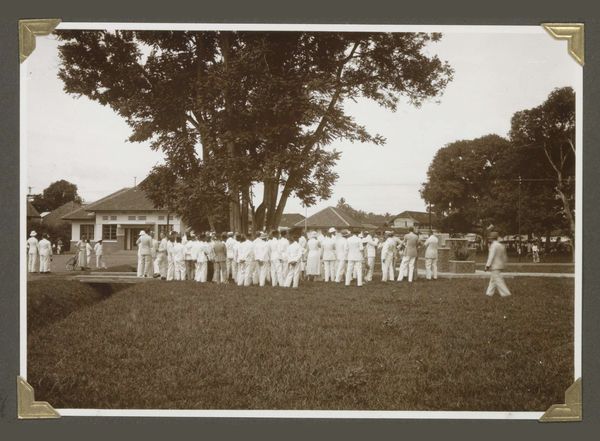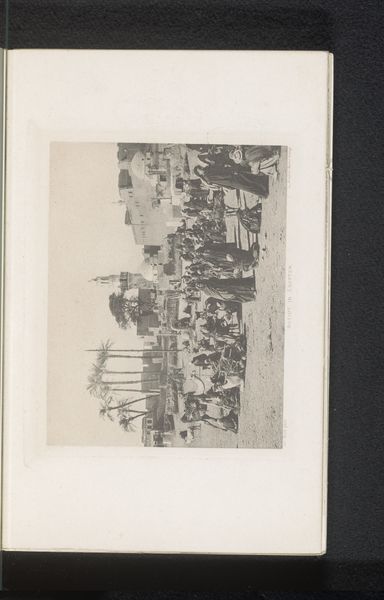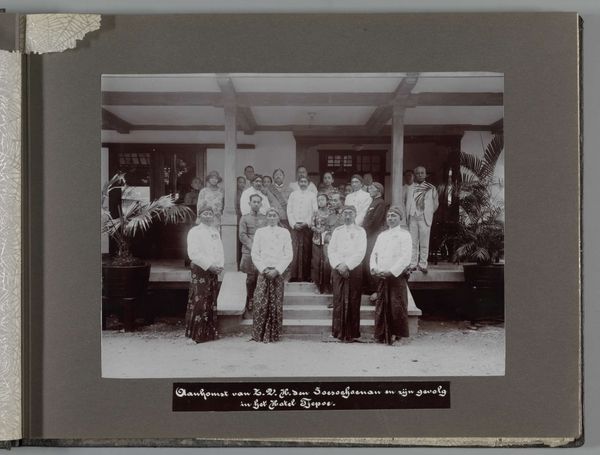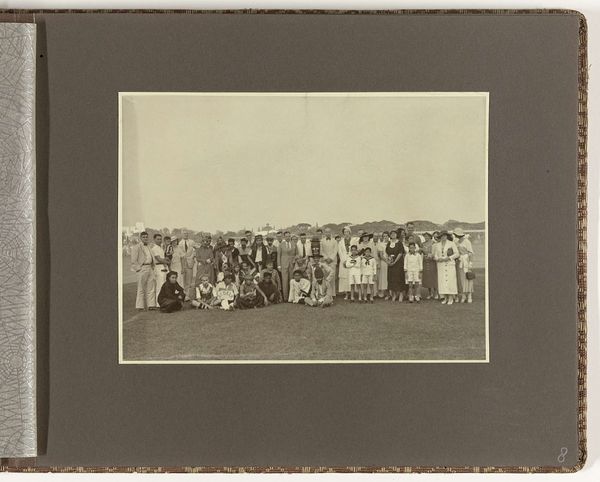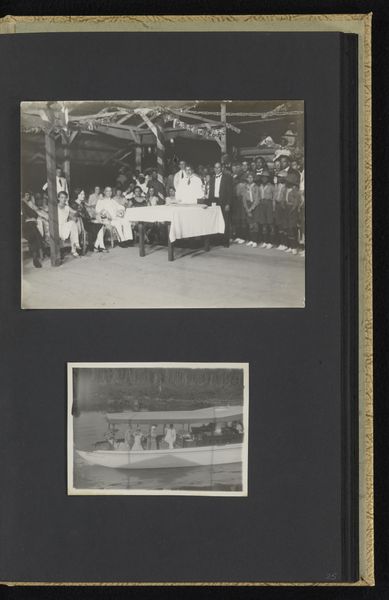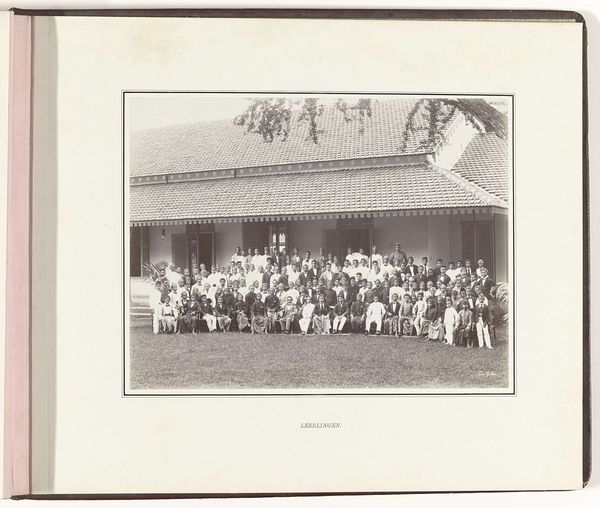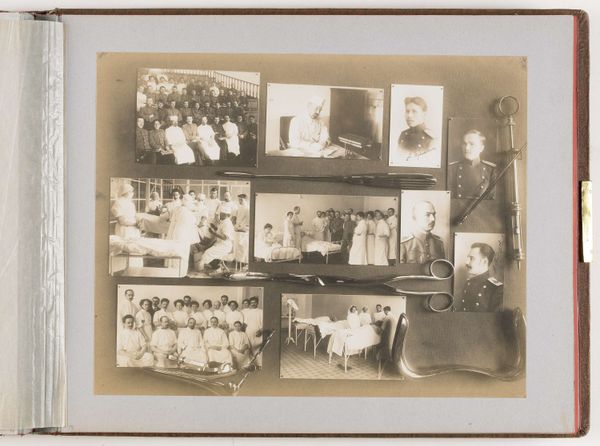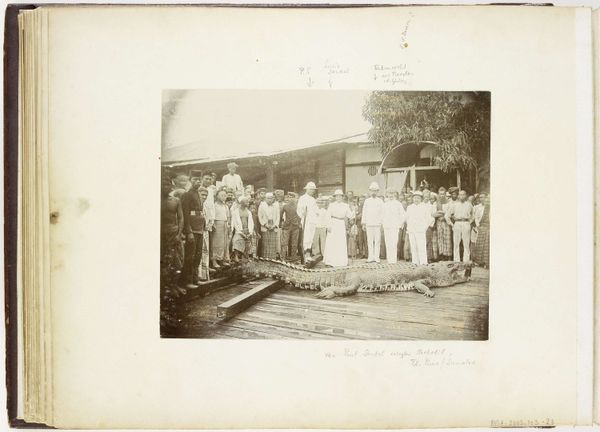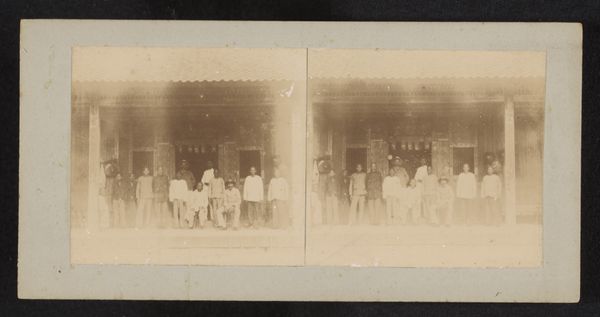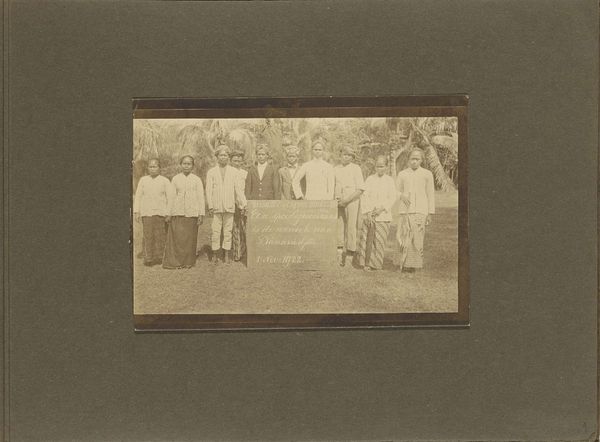
Toeschouwers bij de gekostumeerde voetbalwedstrijd van het Centraal Kantoor voor de Statistiek te Batavia Possibly 1935
0:00
0:00
photography, gelatin-silver-print
#
portrait
#
photography
#
group-portraits
#
gelatin-silver-print
#
modernism
#
realism
Dimensions: length 134 mm, width 181 mm
Copyright: Rijks Museum: Open Domain
Curator: This gelatin-silver print, possibly from 1935, is titled "Toeschouwers bij de gekostumeerde voetbalwedstrijd van het Centraal Kantoor voor de Statistiek te Batavia"—or, "Spectators at the Costume Football Match of the Central Bureau of Statistics in Batavia." Editor: It strikes me as a fascinating blend of staged formality and breezy informality. The subjects, mostly in suits, are clearly posing, yet there's an undeniable energy that suggests a real event unfolding around them. I want to know more about the labor involved. Curator: Let's dig into the context of this image. Batavia, now Jakarta, was the capital of the Dutch East Indies. The Central Bureau of Statistics was likely staffed by a mix of Dutch colonials and local Indonesians. This event, a costume football match, provided an opportunity for a staged social leveling, of sorts, amid strict colonial hierarchies. Editor: Right, a deliberate spectacle. Thinking about the materiality—gelatin silver, the darkroom work involved— it was likely a painstaking process to produce each print. How many were made, who were the intended recipients? These photographs circulated among the colonial administration, acting as material objects of the institution’s social function. Curator: Precisely. And we must also question how these events contributed to the narrative of Dutch authority. Sport can serve as a potent tool for forging national and group identities. This "costume football match," a performance in itself, could be read as reinforcing social roles even as it seemingly loosened them. What does a colonial government do with play? What about the construction of gender within this event and beyond? Editor: I hadn't considered it that way, very insightful. The layers of performance, then, are key— the football match itself, the costuming, and this posed group photo. It points to a complex negotiation of identity and power. Was this intended as public relations to present Dutch civil servants as approachable figures within this political theater? The photo’s function within a specific system of documentation offers interesting implications for materiality. Curator: Exactly. Understanding the layers within this singular moment frozen in silver helps us think critically about representation. What narratives does the image support and suppress about this place and moment? Editor: It’s really remarkable how examining the materials brings questions to the foreground regarding how these colonial infrastructures perpetuated control through constructed identities. It definitely makes me look at the photograph and colonial presence differently.
Comments
No comments
Be the first to comment and join the conversation on the ultimate creative platform.


